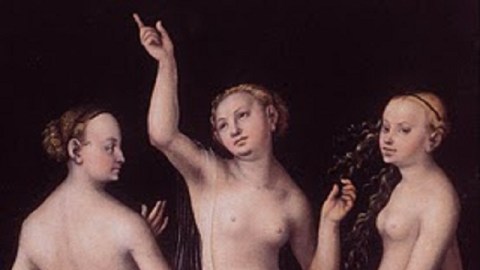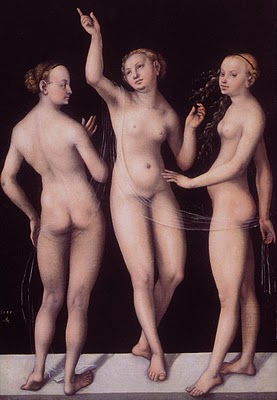Mad, Sad, Bad, Glad: The Past Year in Art

The state of the art of art in the United States and beyond in 2010 reflected the larger unrest of the world itself. I originally wanted to compartmentalize things into the good, the bad, and the ugly, but that seemed inappropriate. So, here’s my recap of art in 2010 as the mad, the sad, the bad, and the glad.
The Mad: The 400th anniversary year of the death of Caravaggio began with a group looking to exhume the remains of the genius. Another group of Italian researchers who claimed to find a code hidden in the Mona Lisa’s pupils wanted to dig up Leonardo da Vinci’s body to study the skull and see if it matches Mona’s face to prove finally the theory that La Gioconda’s actually a self-portrait. Don’t they know that Tomb Raiders is just a game?
The Sad: The art world lost several big names, including sculptress Louise Bourgeois, painter Sigmar Polke, and painter Kenneth Noland. Paul Conrad, the great political cartoonist who earned a coveted spot on Richard Nixon’s enemies list for his work, passed away. Perhaps the greatest fantasy artist of all, Frank Frazetta, succumbed to a stroke. Comic book artists Mike Esposito and Dick Giordano now work in the bullpen of the angels.
The Bad: As sad as the prospect of museums selling off their collections to survive felt, nothing in 2010 got as ugly as the trumped up “War on Christmas” controversy that resulted in the Smithsonian’s National Portrait Gallery dropping David Wojnarowicz’s 1987 video “A Fire in My Belly” from their exhibition Hide/Seek: Difference and Desire in American Portraiture. The tired “Culture Wars” of the 1980s that Wojnarowicz fought in life sadly victimized him years after his death.
The Glad: Fortunately, the Wojnarowicz affair fired up the American arts community to respond against small-minded censorship with the full force of cultural institutions as a vital part of American life. As much as that response gladdened my heart, I think the biggest smile-inducing moment in the arts in 2010 came when the Louvre asked the art-loving public to pitch in to buy a masterpiece they had their eye on (Lucas Cranach the Elder’s 1531 painting Les Trois Grâces, or The Three Graces in English; detail shown above). Many (including moi) scoffed at the idea that they’d ever reach the 1 million Euro goal. Not only did they meet their goal, but they did it well ahead of schedule! Here’s a case where I love being wrong. People spoke with their hard-earned money and supported the idea that masterpieces are worth preserving for posterity. As mad, sad, and/or bad as the art world and world at large gets in 2011, that achievement will keep hope alive in my heart.





